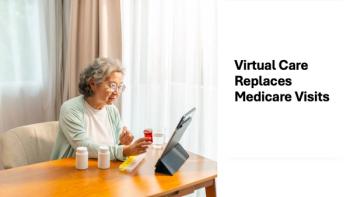
Five ways to ensure millennials pay their medical bills
New TransUnion analysis explores millennial healthcare payment behavior.
Over half of millennials (57%) have limited to no understanding of their health insurance benefits, according to a new report. This is significantly lower than other generations, including Gen X (in which 50% have limited to no understanding) and baby boomers (in which 41% have limited to no understanding).
The report, the "
For this analysis, millennials were defined as consumers born between the years 1980 and 1994; Gen X, born between 1965 and 1979; and baby boomers, born between 1946 and 1964.
The report also found that despite the majority of millennials having health insurance, they tend to pay their medical bills at a slower rate than other generations. In fact, in 2016, 74% of millennials did not pay their medical bills in full, compared to 68% of Gen Xers, and 60% of baby boomers. Yet, seven in 10 Millennials say they would pay their medical bills in full if they had the money to do so.
Generally, the percentage of underpaid medical bills has been accelerating over the past three years. In 2015, 68% of millennials did not pay their bill in full, up from 65% in 2014, according to the report.
“Millennials are facing a tough road-in some ways they were placed at an early disadvantage compared to previous generations,” says Jonathan Wiik, author of the recently published book, Healthcare Revolution: The Patient is the New Payer and principal of healthcare strategy at TransUnion Healthcare. “As Millennials were just entering the workforce and likely had less disposable income, both insurers and employers began cost-shifting payments. Despite these challenges, our research indicates that millennials are indeed interested in responsibly paying their medical debts, while at the same time, healthcare providers will need to get innovative to make the payment process more manageable for millennials.”
Patient is the new payer
According to Wiik, the term “payer” usually refers to an insurance carrier or another third party. “But there’s a paradigm shift to a new healthcare reality, and the patient is the new payer,” he says. “However, patients do not pay the way insurance providers do, nor do they treat medical bill payments like loans or credit cards. Patients take longer to pay and often prioritize other payments like their mortgage or auto loan over their medical bills.”
According to the report, approximately 46% of millennials would be more apt to pay their medical bills if they were provided an estimate of their healthcare costs at the point of service.
Millennials also tend to have less understanding of recent trends such as high-deductible plans. More than one-quarter of millennials (26%) say they don’t understand these plans, a higher level than Gen X (17%) and baby boomers (9%).
“Healthcare providers looking to improve cash flow from millennial patients should look for ways to encourage payments at the time of service while offering more educational tools to ensure they better understand the complex healthcare landscape,” says John Yount, vice president of healthcare products at TransUnion. “This will not only engage them early, it will protect revenue from leakage, and provide an overall better patient experience.”
Additional findings from the report include:
- 35% of millennials do not plan for medical or healthcare expenses as part of their budget.
- 80% of millennials do not have a health savings account in which to pay for out-of-pocket expenses.
- 37% of millennials have private commercial health insurance.
- 51% of millennials do not feel prepared to manage healthcare/medical expenses; compared to 42% of Gen Xers and 33% of baby boomers.
- 40% of millennials compare the cost of services by healthcare provider compared to 29% of Gen Xers and 22% of baby boomers.
“Healthcare providers need to recognize that successful financial management hinges on effective communication with patients,” says Wiik. “This can take many forms, but hospitals and healthcare systems that try to avoid communicating with patients regarding the cost of care assume a large amount of bad debt risk. With the various changes in healthcare, and the patient’s growing role as the new payer, health systems will be tasked with shifting gears to become advocates for patients’ financial health in addition to their physical health.”
Five tips for health execs
Based on the survey, Wiik offers five tips for healthcare executives looking to improve revenue cycle management for millennial patients.
1. Educate millennial patients. Educating millennials about their payments is about more than the hospital’s need to reduce bad debt. “Whether or not millennials understand their payments can influence whether or not a hospital can continue to provide high-quality care to the underserved,” Wiik says.
2. Simplify financial conversations. Providing pre-service estimates can help millennials understand financial obligations and foster financial engagement.
3. Collect payments upfront. Millennials expect to pay for products and services when they receive them, according to Wiik. Take payment in advance or at time of service, especially using mobile payment methods preferred by millennials, he says.
4. Adopt data-driven work flows. “Since the cost of care can be confusing, access to clear, concise, and accurate data is essential to establishing credibility between staff and millennial patients,” Wiik says. “Any process in place for financial navigations work flows should work to the advantage of both providers and millennial patients by offering flexible payment options, and by considering patients’ ability to pay and the organizational risk of the bad debt.”
5. Create patient financial risk profiles. Creating a comprehensive view of patients’ financial situations using predictive analysis at pre-registration can help hospitals mitigate financial risk from millennial patients and help find the best financial assistance programs for them, according to Wiik.
Newsletter
Get the latest industry news, event updates, and more from Managed healthcare Executive.























































